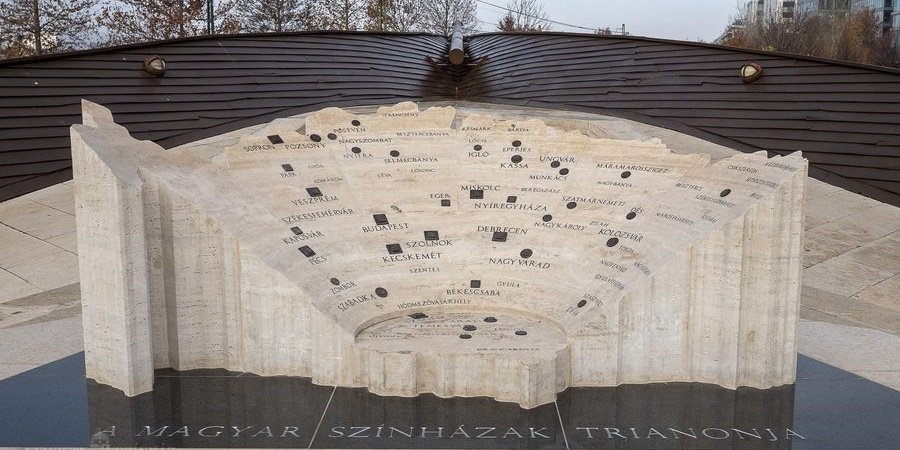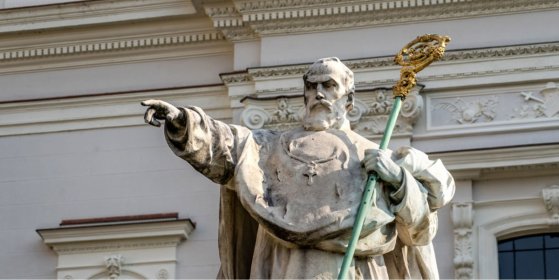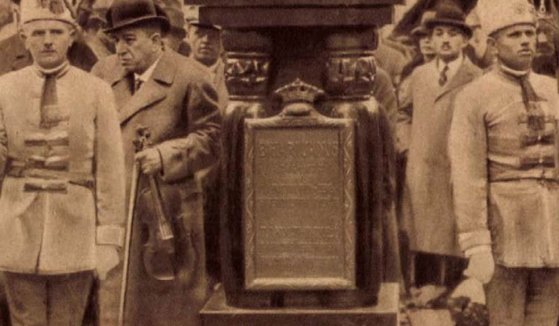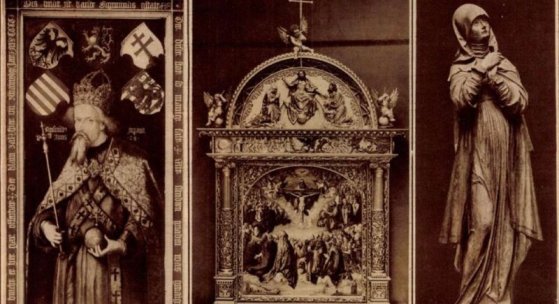 The „intertwined history” of the bridges and the city of Budapest
Which ideas and events have shaped the fate of bridges of Budapest and the cityscape? Alongside many other interesting facts, this question is also answered this newly published book by the Budapest City Archives, which introduces the history of bridges in Budapest.
The „intertwined history” of the bridges and the city of Budapest
Which ideas and events have shaped the fate of bridges of Budapest and the cityscape? Alongside many other interesting facts, this question is also answered this newly published book by the Budapest City Archives, which introduces the history of bridges in Budapest.
culture
 Trianon of Hungarian Theaters - A Monument to the Disintegrated Hungarian Theater Life
Trianon of Hungarian Theaters - A Monument to the Disintegrated Hungarian Theater Life
December 1, 2021 at 8:00 PM
The National Theater commemorates the Hungarian theatrical life, which has been torn apart for more than a hundred years, with the sculpture The Trianon of Hungarian Theaters. The work of István Horváth Böjte will be inaugurated on Saturday in front of the theater building in Hajóorr.
Péter Pázmány never visited Budapest – Born 450 years ago the prelate remains a symbol of Hungarian unity
October 4, 2020 at 9:00 AM
When in 1635 Péter Pázmány founded the first University in Hungary – the successor of which operates in Budapest today – Buda and Pest were occupied by the Ottomans. Thus, one of the greatest figures of Hungarian baroque literature, and a leading figure of Hungarian Catholicism, never visited what is today Budapest. Nevertheless, two universities in the capital vie to preserve his memory. Several statues and other works of art depict him around the city, emphasising how the life's work of this Hungarian prelate is unavoidable in public life, education, culture and religion.
The memory of János Bihari on Margit Island
July 26, 2020 at 3:00 PM
The history of an old statue on Margit Island hides many interesting things. How many people know today that the traditional symbol of the gipsies was a hedgehog? This symbol was included on János Bihari's, one of the most loved gipsy musicians dubbed the Gypsy King, statue on the Margit Island, created by a special figure of Hungarian statuary, the deaf-mute László Vaszary.
Dürer in Budapest – The Hungarian roots of an internationally respected painter
July 14, 2020 at 11:00 AM
Ajtósi Dürer Way is a busy and well-known road that runs alongside City Park. However, the roots of its name are less well-known. Albrecht Dürer was a world-renowned Bavarian Renaissance painter with Hungarian roots. His father was born in the Hungarian village of Ajtós next to Gyula, from where he emigrated to Nuremberg, where the famous artist was later born. The Hungarian roots of the painter were a well-known fact in Nuremberg as well. Thus, on the 400th anniversary of this death, a delegation from the city visited Budapest. The Bavarians gave the Hungarian capital a unique statue to commemorate the event, while Budapest named a road after the famous painter.
More articles
 The „intertwined history” of the bridges and the city of Budapest
Which ideas and events have shaped the fate of bridges of Budapest and the cityscape? Alongside many other interesting facts, this question is also answered this newly published book by the Budapest City Archives, which introduces the history of bridges in Budapest.
The „intertwined history” of the bridges and the city of Budapest
Which ideas and events have shaped the fate of bridges of Budapest and the cityscape? Alongside many other interesting facts, this question is also answered this newly published book by the Budapest City Archives, which introduces the history of bridges in Budapest.
 The Bridge Report, which brought a turning point in the history of Budapest
A travel report that changed the history of Pest and Buda, as well as Hungary. The little book contributed to the change of half a thousand years of legal customs and the implementation of an investment of unprecedented size and technical quality. This book was The Bridge Report [Hídjelentés in Hungarian].
The Bridge Report, which brought a turning point in the history of Budapest
A travel report that changed the history of Pest and Buda, as well as Hungary. The little book contributed to the change of half a thousand years of legal customs and the implementation of an investment of unprecedented size and technical quality. This book was The Bridge Report [Hídjelentés in Hungarian].
 Drama on the university wall - The heroic monument was planned 95 years ago
In the constant hustle and bustle of the Egyetem Square in Pest, the students may not even notice the monument that decorates the short section of wall between the church and the central building of ELTE. However, it commemorates their predecessors, the heroes who fought for their country in World War I, and those who heroically helped them. The first design of the dramatically collapsing soldier was born in 1928, ninety-five years ago.
Drama on the university wall - The heroic monument was planned 95 years ago
In the constant hustle and bustle of the Egyetem Square in Pest, the students may not even notice the monument that decorates the short section of wall between the church and the central building of ELTE. However, it commemorates their predecessors, the heroes who fought for their country in World War I, and those who heroically helped them. The first design of the dramatically collapsing soldier was born in 1928, ninety-five years ago.



